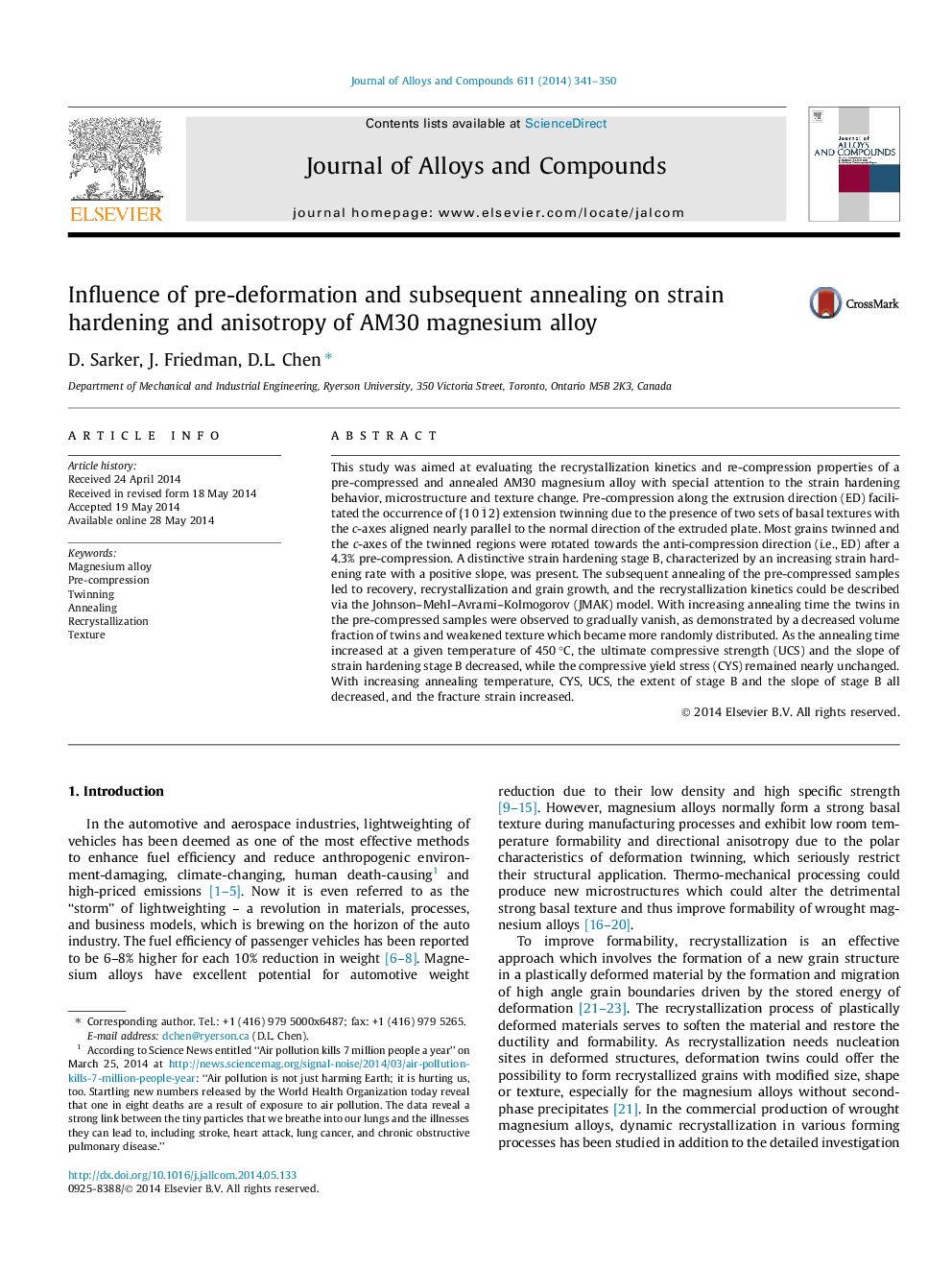| Article ID | Journal | Published Year | Pages | File Type |
|---|---|---|---|---|
| 1610485 | Journal of Alloys and Compounds | 2014 | 10 Pages |
•Pre-compression along the extrusion direction facilitates extension twinning.•A distinctive stage B is characterized by an increasing strain hardening rate.•The recrystallization kinetics can be described via the JMAK model.•With increasing annealing time, the existing twins gradually disappear.•With increasing annealing temperature, the extent and slope of stage B decrease.
This study was aimed at evaluating the recrystallization kinetics and re-compression properties of a pre-compressed and annealed AM30 magnesium alloy with special attention to the strain hardening behavior, microstructure and texture change. Pre-compression along the extrusion direction (ED) facilitated the occurrence of {1 0 1¯ 2} extension twinning due to the presence of two sets of basal textures with the c-axes aligned nearly parallel to the normal direction of the extruded plate. Most grains twinned and the c-axes of the twinned regions were rotated towards the anti-compression direction (i.e., ED) after a 4.3% pre-compression. A distinctive strain hardening stage B, characterized by an increasing strain hardening rate with a positive slope, was present. The subsequent annealing of the pre-compressed samples led to recovery, recrystallization and grain growth, and the recrystallization kinetics could be described via the Johnson–Mehl–Avrami–Kolmogorov (JMAK) model. With increasing annealing time the twins in the pre-compressed samples were observed to gradually vanish, as demonstrated by a decreased volume fraction of twins and weakened texture which became more randomly distributed. As the annealing time increased at a given temperature of 450 °C, the ultimate compressive strength (UCS) and the slope of strain hardening stage B decreased, while the compressive yield stress (CYS) remained nearly unchanged. With increasing annealing temperature, CYS, UCS, the extent of stage B and the slope of stage B all decreased, and the fracture strain increased.
